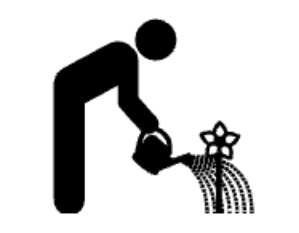Indian Blanket Flower: Characteristics, How to Grow and Care, and Much More
Have you ever seen a flower that looks like a fiery sunset captured in its petals? Then you’ve probably come across the dazzling Indian blanket flower (Gaillardia pulchella).
This vibrant wildflower isn’t just a feast for the eyes; it’s also a low-maintenance, drought-tolerant dream for new gardeners like yourself.
This guide will walk you through everything you want to know about this captivating flower. From its fascinating history to its easy-care ways, we’ll equip you with the knowledge to cultivate a stunning display of Indian blanket flowers in your own garden.
Indian Blanket Flower: Plant Profile, Characteristics, and Facts
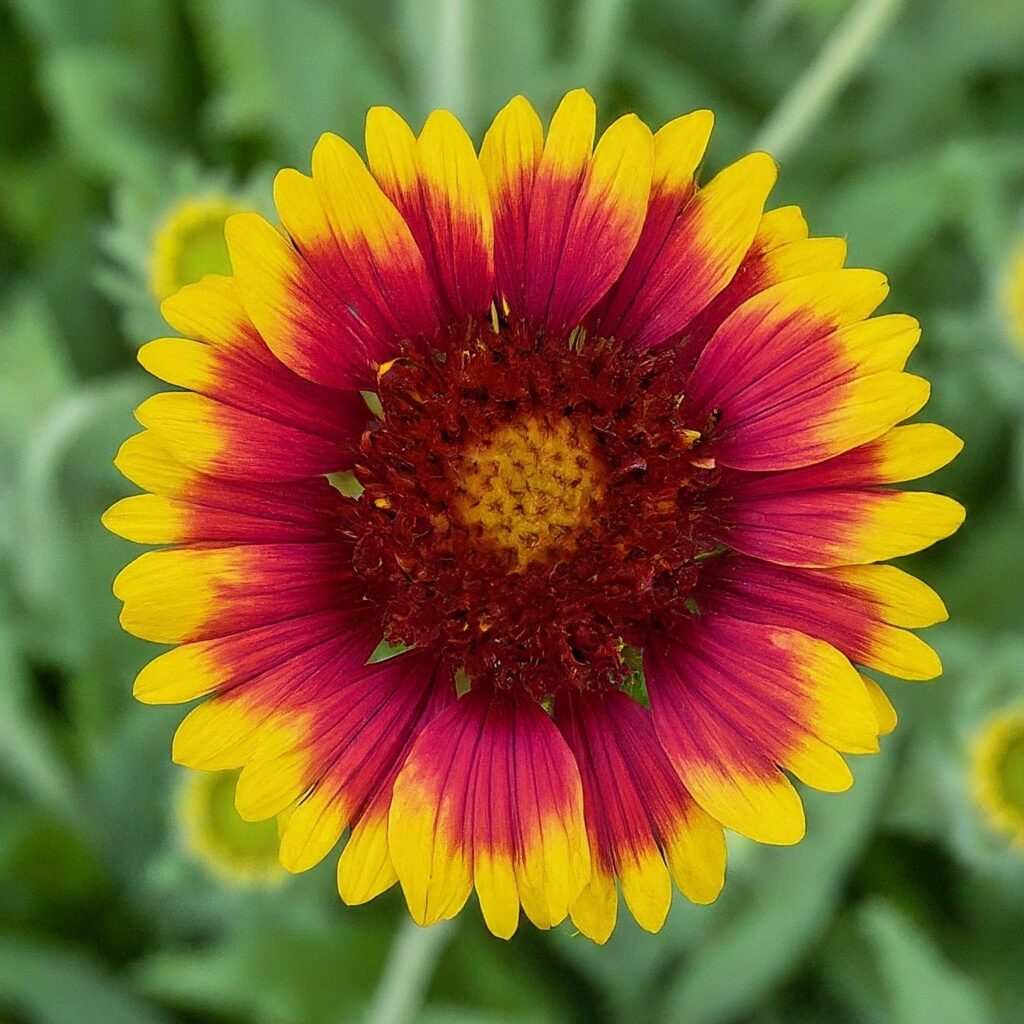
Let’s get acquainted with our star performer! Here’s a quick lowdown on the Indian blanket flower:
| Feature | Description |
| Plant Type | Perennial (in warm climates) or annual (in colder climates) |
| Flower Color | Red, yellow, orange, burgundy (single or bicolored blooms) |
| Bloom Time | Early summer to fall |
| Height | 1-3 feet |
| Spread | 1-2 feet |
| Light Preference | Full sun |
| Soil Preference | Well-draining, sandy or loamy soil |
| Water Needs | Drought-tolerant once established |
| Deer Resistance | Yes |
Bonus Fun Fact: The vibrant colors of the Indian blanket flower petals attract butterflies and other pollinators, turning your garden into a buzzing haven for beneficial insects!
Origin and History of Indian Blanket Flower
The Indian blanket flower, also known as Gaillardia pulchella, boasts a rich heritage. These cheerful blooms hail from the prairies and plains of North and South America, where they thrived in the hot, dry summers. Native American tribes used the flowers for medicinal purposes and adorned their clothing with them, hence the evocative name “Indian blanket flower.”
Fast forward to the 19th century, when European explorers and colonists encountered these captivating blooms. The Lewis and Clark Expedition, on their famous journey westward, documented over 200 plant varieties, including the Indian blanket flower.
As settlers moved across the continent, the flower’s popularity spread. Its resilience and vibrant colors made it a welcome addition to gardens, bringing a touch of wild prairie charm to cultivated landscapes.
Today, the Indian blanket flower continues to be a beloved choice for gardeners worldwide, a testament to its enduring beauty and historical significance.
What are the Unique Features and Benefits of Indian Blanket Flowers?
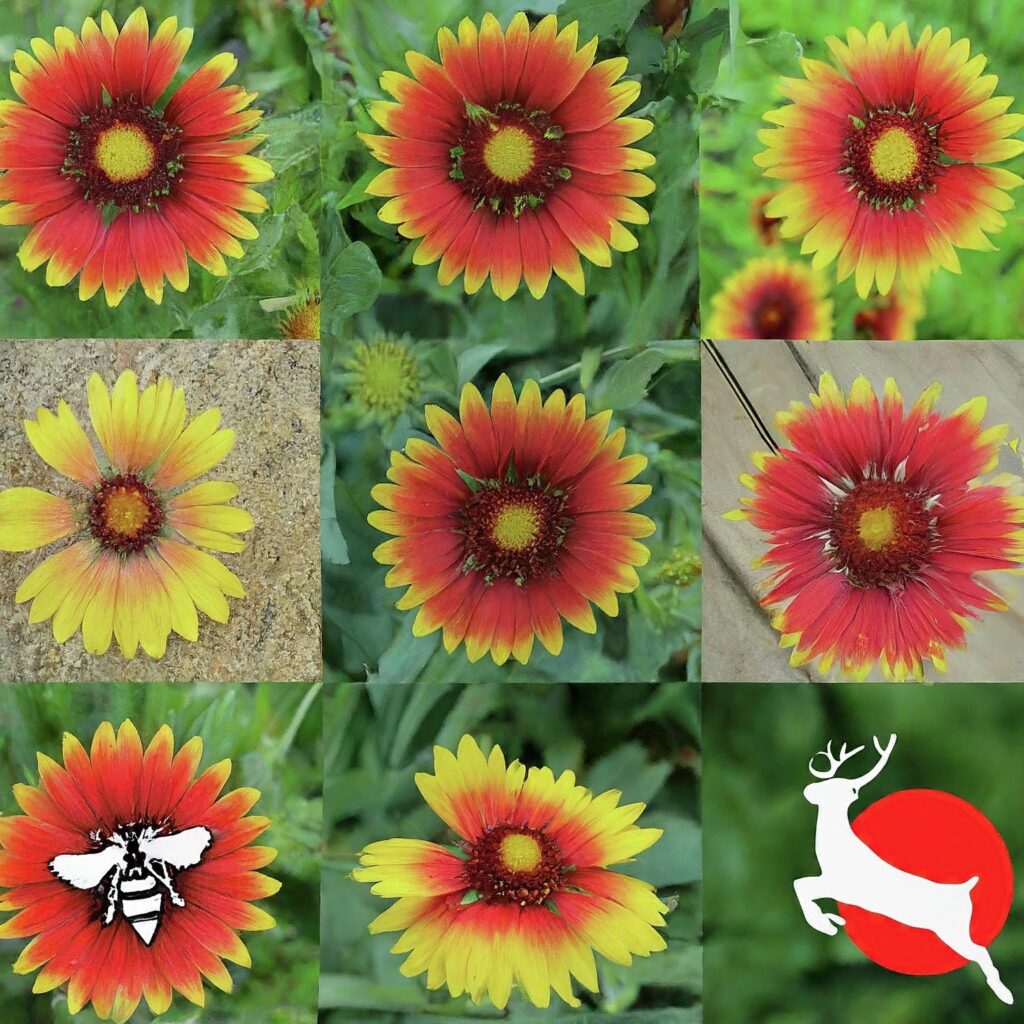
There’s more to this flower than meets the eye! Here are some reasons why Indian blanket flowers deserve a spot in your garden:
- Long Blooming Season: Enjoy a continuous burst of color from early summer right through fall.
- Drought Tolerance: Save water and worry less! Once established, these resilient flowers thrive on minimal watering.
- Low Maintenance: They’re not fussy about soil conditions and require minimal care, making them perfect for busy gardeners.
- Heat Tolerance: Indian blanket flowers revel in hot summer temperatures, adding a pop of color when other plants might wilt.
- Attracts Pollinators: Butterflies, bees, and hummingbirds adore these flowers, creating a vibrant pollinator haven in your garden.
- Deer Resistant: Deer tend to leave these beauties alone, so you can rest assured your floral display stays intact.
Bloom Color and Time
Indian blanket flowers are renowned for their captivating daisy-like blooms. The flower heads boast a fiery display of red, yellow, orange, and burgundy hues, often with contrasting centers or bi-colored petals. This vibrant palette adds a touch of sunshine to any garden border.
The blooming season for Indian blanket flowers is a true celebration of color, stretching from early summer all the way to fall. So, you can enjoy a continuous display of these cheerful blooms for months on end.
Native Habitat and Distribution
Imagine vast stretches of North American prairies ablaze with color – that’s the natural habitat of the Indian blanket flower. These wildflowers thrived in hot, dry climates with well-draining sandy or loamy soils. Today, they’re widely cultivated across the globe, bringing a touch of wild prairie charm to gardens everywhere.
Indian Blanket Flower Growing Conditions and Climate
The Indian blanket flower is a champion of adaptability. Here’s what it thrives in:
- Sun: Give your Indian blanket flower a prime spot in full sun. At least 6-8 hours of direct sunlight a day is ideal for promoting abundant blooms and healthy growth.
- Soil: Well-draining soil is key. Sandy or loamy soil mixes are perfect, as they prevent water from accumulating around the roots. Avoid heavy clay soils, as they can lead to root rot.
- Temperature: These heat-loving flowers flourish in warm summer temperatures. They can even handle occasional frosts, especially in milder climates.
How to Grow Gaillardia Pulchella from Seeds
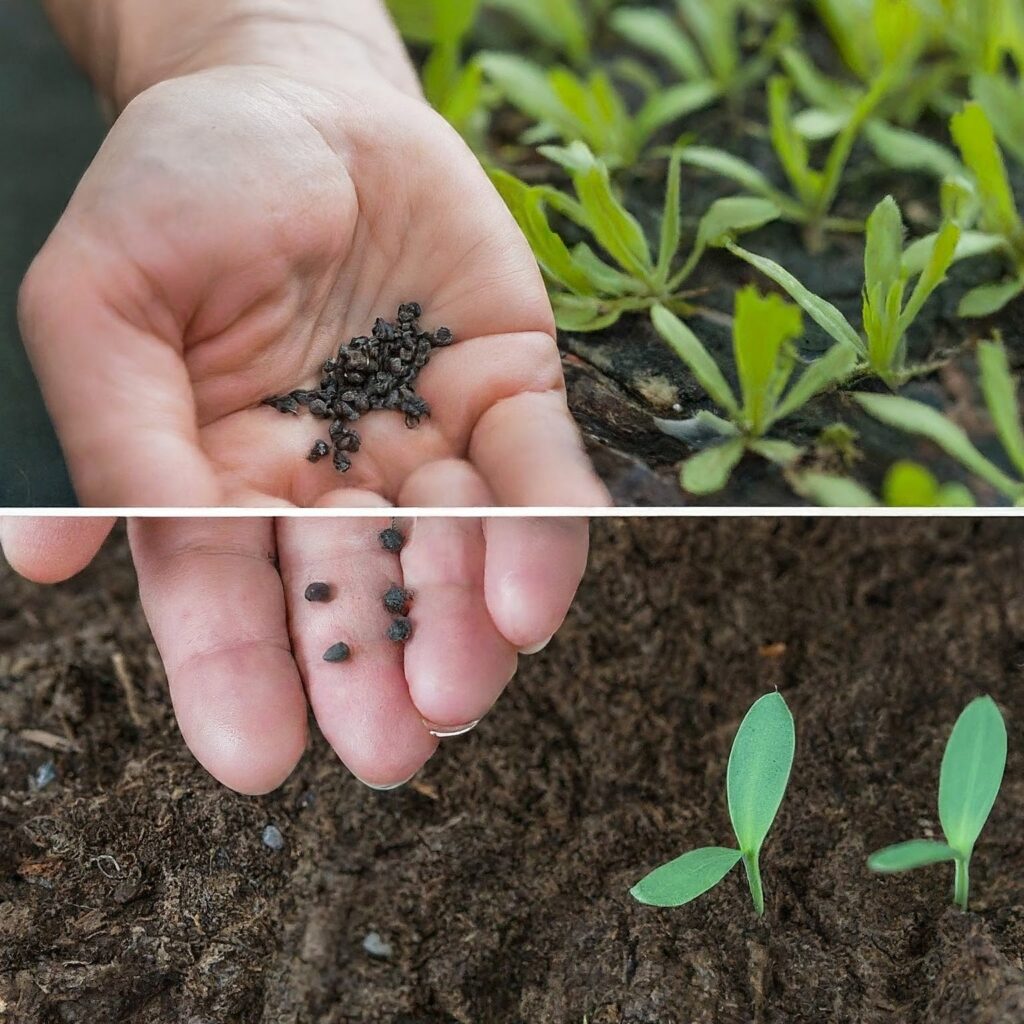
Ready to bring the vibrant magic of Indian blanket flowers to your garden? Here are the steps to grow them from seeds:
- Timing is Key: Sow your Indian blanket flower seeds directly outdoors in the spring, after the danger of frost has passed. Alternatively, you can start them indoors 6-8 weeks before the last frost date.
- Seeding: Scatter the seeds thinly over the prepared soil surface and press them gently into contact. You don’t need to cover them with a lot of soil – a light dusting is sufficient.
- Watering: Keep the soil consistently moist, but not soggy, until germination occurs. A mister is a handy tool for this delicate task. Check out our article on the best time of the day to water plants.
- Germination: Seedlings should emerge in 10-14 days. Once they have a few sets of true leaves, thin them to a spacing of 12-18 inches apart.
- Enjoy the Show! With proper care, your Indian blanket flowers should start blooming in 6-8 weeks from sowing the seeds.
Pro Tip: Deadheading spent blooms encourages continuous flowering throughout the season. Simply snip off the faded flower heads just below the wilted petals.
How to Propagate Indian Blanket Flowers
There are two main ways to propagate Indian blanket flowers:
Division
If you have existing Indian blanket flower plants, you can divide them in the spring or fall. Carefully dig up the mature plant and use a sharp knife to divide it into sections, each with a healthy root system. Replant the divisions in your desired location.
Seed Saving
Want to harvest your own seeds for future plantings? Allow some of the flower heads to dry on the plant. Once they turn brown and papery, extract the seeds and store them in a cool, dark place for sowing next spring.
Indian Blanket Flower Care Tips
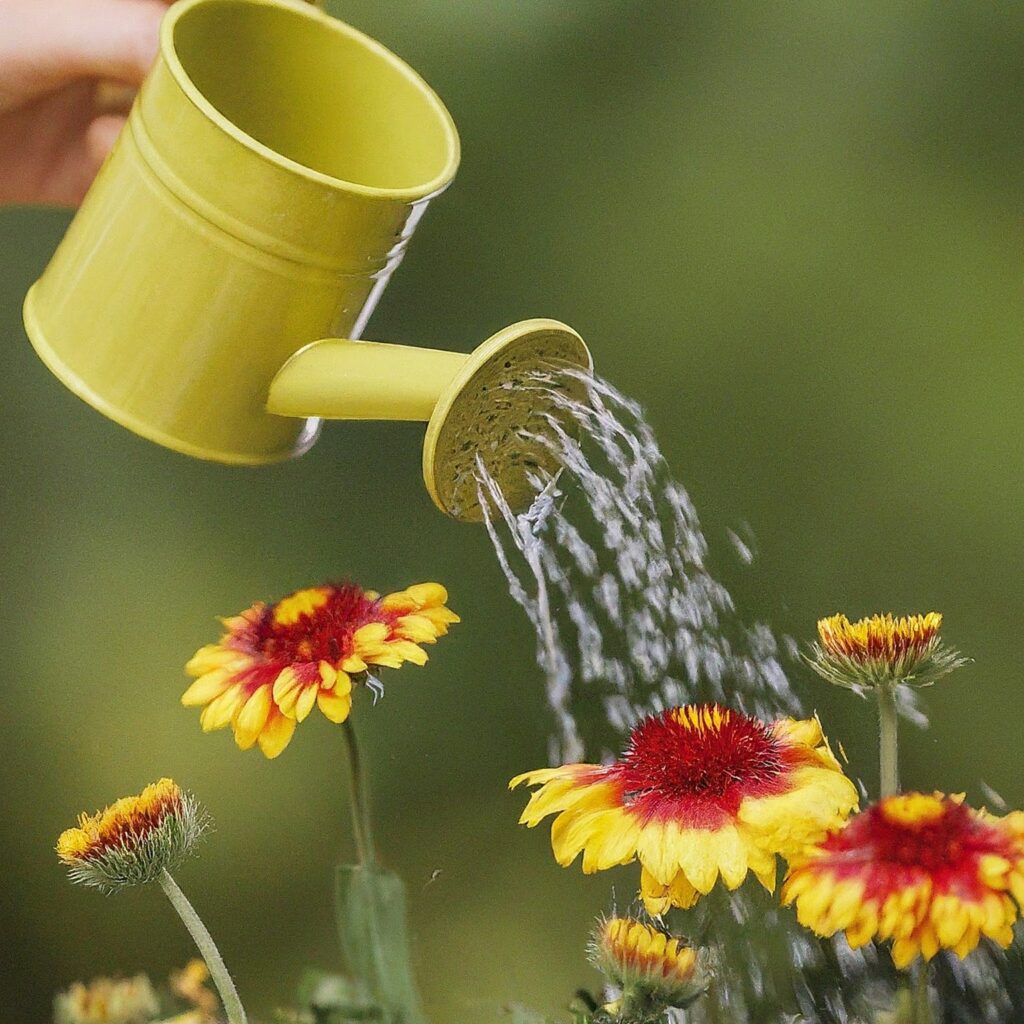
The Indian blanket flower’s charm extends far beyond its captivating blooms. These low-maintenance beauties require minimal effort to thrive, making them ideal for busy gardeners or those new to the world of cultivation.
Here’s a closer look at how to keep your Indian blanket flowers flourishing:
1. Watering
Mother Nature often provides all the hydration these drought-tolerant plants need. Once established, water deeply only when the top inch of soil feels dry to the touch.
Overwatering is a bigger threat than underwatering, so resist the urge to constantly drench the soil.
2. Feeding
Indian blanket flowers are generally frugal feeders and don’t require frequent fertilization. In fact, overly fertile soil can lead to less flowering.
However, if your plants seem lackluster, a light application of a balanced fertilizer in the spring can give them a boost. A little goes a long way, so a diluted solution or a slow-release liquid nitrogen fertilizer is ideal.
Deadheading
As mentioned earlier, deadheading spent blooms is a simple yet effective way to encourage continuous flowering throughout the season. Simply snip off the faded flower heads just below the wilted petals. This not only keeps your plants looking tidy but also redirects their energy towards producing new blooms.
Winter Considerations
Depending on your climate, Indian blanket flowers can be perennials or annuals.
In colder climates (zones 3-6), winter protection might be necessary. Apply a layer of mulch, such as leaves or straw, around the base of the plants before the first frost arrives. This insulates the roots and helps them survive the colder temperatures.
Alternatively, you can treat them as annuals and enjoy a fresh start with new seeds each spring.
How to Tackle the Common Problems With Indian Blanket Flowers

While Indian blanket flowers are generally trouble-free, here are a few potential issues you might encounter:
- Powdery Mildew: This fungal disease can appear as white spots on the leaves. To tackle it, improve air circulation around your plants and water only at the base to prevent moisture buildup on the leaves. For heavy infestations of powdery mildew, a chemical fungicide might be the best course of action.
- Slugs and Snails: Watch out for slimy slugs and snails! These unwelcome guests can leave unsightly holes in your Indian blanket flower leaves as they munch on a midnight snack. Apply organic slug and snail control methods like diatomaceous earth or beer traps.
- Root Rot: This can occur in poorly drained soil. Ensure your plants have well-draining soil and avoid overwatering.
Where to Buy Indian Blanket Flower Seeds
The vibrant blooms of Indian blanket flowers are just a seed packet away! Fortunately, these popular wildflowers are widely available, making it easy to add a burst of color to your garden.
Here are your options for acquiring Indian blanket flower seeds:
- Online Seed Retailers: The internet offers a vast selection of seed companies at your fingertips. With a quick search, you can browse through numerous online retailers specializing in flower seeds. Many reputable online seed companies offer a wide variety of Indian blanket flower seeds, often featuring different colors, seed quantities, and even organic options.
- Gardening Stores and Nurseries: Local gardening stores and nurseries are fantastic resources for seeds and gardening advice. The benefit of shopping locally is the ability to see the seed packets in person and potentially consult with knowledgeable staff. These experts can offer personalized recommendations based on your climate and desired flower color.
- Seed Exchanges and Swaps: If you’re looking for a more community-oriented approach, consider seed exchanges or swaps. These events, often hosted by gardening clubs or local organizations, connect gardeners who share seeds and plants. You might find fellow enthusiasts who have successfully grown Indian blanket flowers and are willing to share some seeds.
- Big Box Stores and Online Marketplaces: While not always the most reliable source for high-quality seeds, some big-box stores and online marketplaces may offer Indian blanket flower seeds. However, be cautious when buying seeds from these sources. Opt for reputable brands and check the packaging for details like germination rates and harvest dates.
Pro Tip: No matter where you purchase your seeds, always prioritize reputable companies with a track record of providing high-quality seeds. Look for details on seed origin, germination rates, and planting instructions.
A Showstopping Addition to Your Garden
With their vibrant colors, long bloom time, and easy-care nature, Indian blanket flowers are a true gem for beginner gardeners. So, why not add a touch of wild prairie charm to your garden and witness the mesmerizing display of these captivating blooms throughout the summer and fall?
With a little planning and these helpful tips, you can cultivate a thriving patch of Indian blanket flowers that will attract pollinators, add a pop of color, and bring
FAQs
Here are some frequently asked questions about Indian blanket flowers:
1. What is the spiritual meaning of the Indian Blanket Flower?
There isn’t a universally recognized spiritual meaning associated with the Indian blanket flower. However, some Native American tribes might have attributed symbolic meanings to the flower based on their cultural beliefs.
2. What is the inflorescence of the Indian blanket flower?
The inflorescence of the Indian blanket flower is a capitulum, which is a type of flower head where many small florets cluster together to resemble a single flower.
3. What are the medicinal uses of Indian Blanket Flowers?
While there might be historical usage of Indian blanket flowers in traditional medicine by certain cultures, it’s important to consult with a qualified herbalist before attempting any medicinal use of plants.
4. Is the Indian blanket flower poisonous?
No, Indian blanket flowers are not considered poisonous. However, it’s always best to avoid ingesting any unknown plant material.
